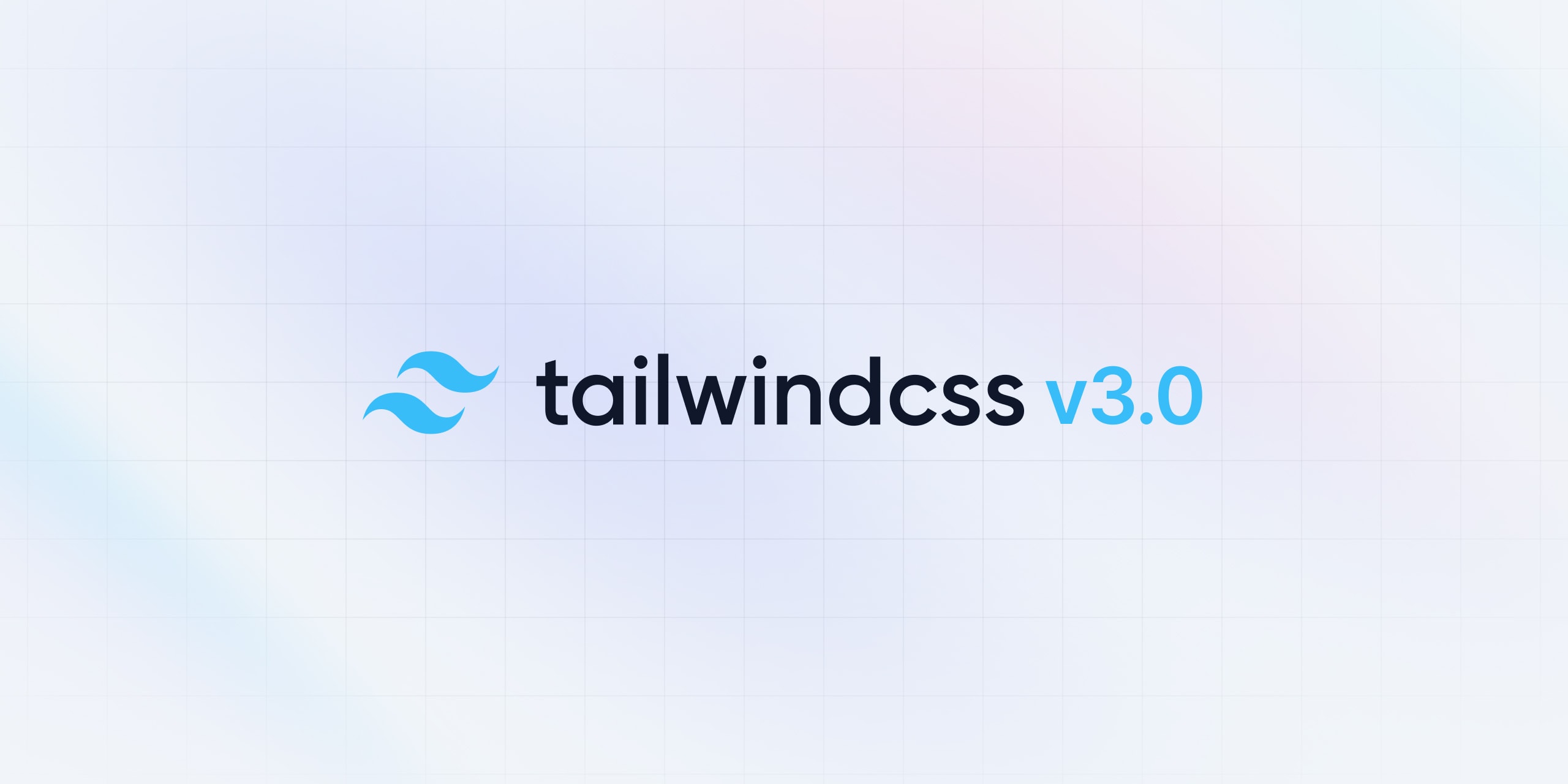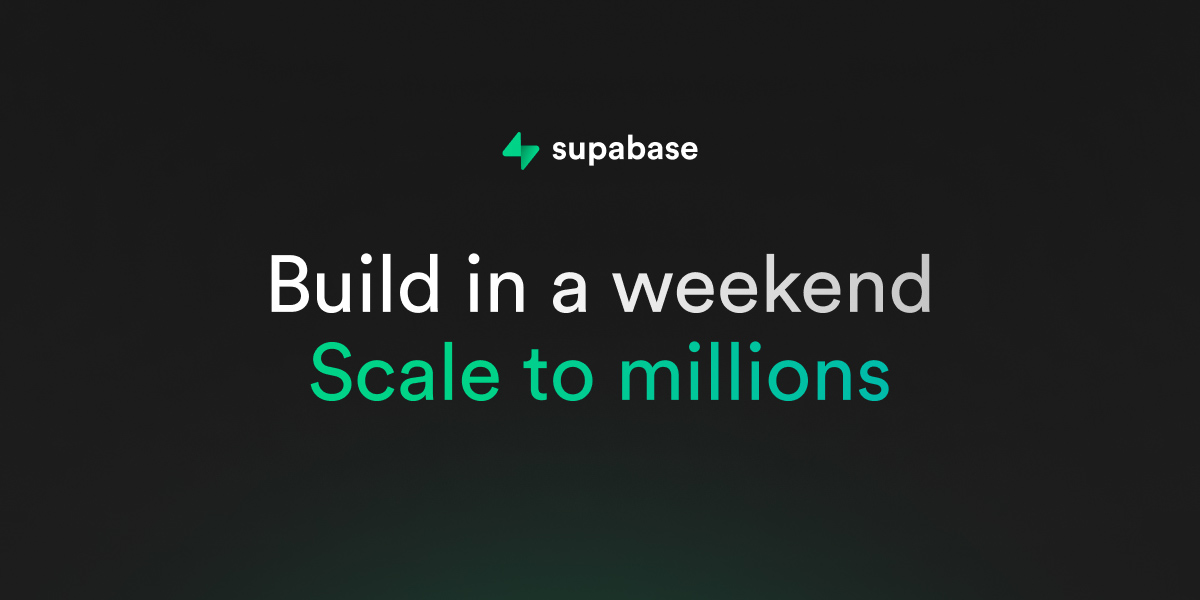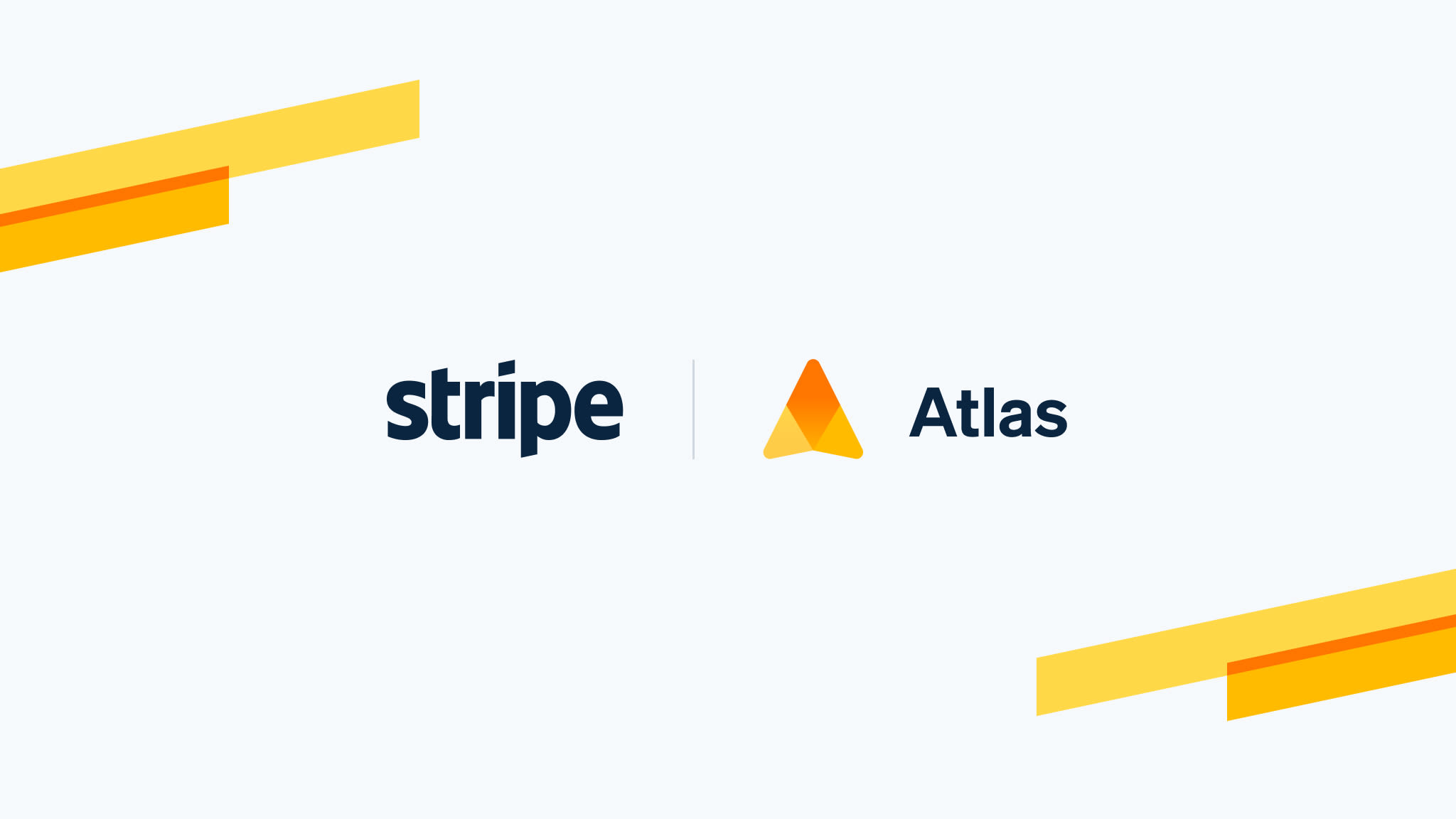On Starting
There's never been a better time to start your own startup. Here is my reflection on the what I learned over the past 18 months.

Now is the greatest time to explore a project, turn it into company, and scale the business. There's a lot of noise when it comes to this topic, but let's cut through it quickly.
Interest, interested, interesting: an infinite energy source
If you're interested in genuinely interesting problems, gratifying your interest energetically is the best way to prepare for a startup – Paul Graham
You will need an interesting problem to solve that you find interest in – otherwise none of this will work. You will find an infinite source of energy and motivation when working on something that is gratifying and interesting for you.
It is a feeling unlikely anything else and you will know whether or not you are working on a problem that is interesting for you. How will you know? Many people label this as obsession, but the reality is, your mind will fall in love with the problem and be obsessed with solving it.
Without this energy source, none of what follows will be helpful...
The Maze of Discovery
If you don't have an interesting problem, spend some time wandering the idea maze. I should not take you long to go from an idea to a prototype, and you will likely need to repeat this process many times.
The easiest way to find problems is to look at problems you already have. What annoying thing do you spend a lot of time and effort on every single day or week? Why are you doing them? Why do you hate doing it? If you're a manager, what are the rote tasks your team hates doing? Why are they doing them? Why do they hate the task?
Make a list of those problems and start wandering the maze. There will be many conversations, explorations, false starts, and discovery. The secret to all of this is collecting secrets. You are on a mission to discover unknown secrets that you can apply in your solution to this problem.
Every great business is built around a secret that's hidden from the outside. A great company is a conspiracy to change the world; when you share your secret, the recipient becomes a fellow conspirator. – Peter Thiel
Balaji Srinivasan's Startup Engineering course best details the idea maze and how to build a venture-scale business.

From Idea to Profits, you will need to talk to people about the problem you are solving. How many people? It's somewhere between 10 and 30, not including all of the bad matches that don't have the problem you're solving. Note: this number is always debated, and it ultimately depends on two factors in my opinion: how brilliant you are and how much you already know about the domain. Both of these factors will drastically lower the number of people you need to speak with to continually understand the problem.
I use tldraw as my tool of choice for idea drawing. It's lacking most fancy tools that will keep you stuck in sketching only the most important aspects of your idea.

Despite years of Photoshop, Sketch, and Figma use, I mostly believe these tools are not needed until a bit later, and the reason is this: unless you're incredibly disciplined, you will waste many cycles on small details that will not matter at this point.
Details do matter, but not on napkin sketches.
Your ability to clearly communicate your idea is the most important priority.
Starting is only the beginning
It's March 2022 and it's dark out. It's time to build. I have several pages of sketches and decide to build a prototype for Launchpad.
Before tonight, I had not written a line of code in almost 10 years. So much has changed since then – namely – every concept and framework is now being taught for free on Youtube.
There are many resources, but with the Fireship Channel, I quickly ramped back up on computer science concepts and front-end stack options. If did some sort of 80/20 analysis of educational resource impact on my work, I would point to Fireship.
I built the first prototype, working in a browser in an evening, and added additional pages the next evening.
The time investment may vary for you, but the resources to learn are there.
Frameworks, freemium, free
There are many frameworks to choose from, but I am going to do you a favor and make a recommendation. This is based on the generally available community, platforms, and support for them.
NextJS
NextJS is free and open source.

You can build a full-stack application very quickly with NextJS. It's a variation of React, and has the largest community around it. There many – and I mean many – other options to choose from, but for your first prototype, I believe it's the fastest way to get started.
Vercel
Vercel has a generous free tier.

Vercel is the fastest way to ship a working prototype. When I got started, it was mostly for frontend apps, however their recent launch of database options makes them a strong contender for everything you will need.
Shadcn/UI
Shadcn/UI and Tailwind are free and open source.


Tailwind massively simplifies CSS best practices and they also offer pre-built UI components. But Shadcn/UI takes it a step further and supplies nearly every UI pattern you will need – for free.
Supabase
Supabase has a generous free tier.

Supabase offers an amazing backend-as-a-service platform that goes beyond a simple Postgres platform, and bakes in authentication, functions, and more.
Create T3
T3 is free and open source.
You can put most of this all together in a single package called create-t3. T3 wraps a few more extras that make it possible to convert your simple prototype into a complete full-stack application.
The Business
See a pattern emerging here? You haven't spent a single dime yet. You have only spent your time. Remember this, we'll talk about it later.
Once you have a working project, great feedback, and some people using it – it's time to think about the business. I will tell you now that any time spent before those things – the working project, the great feedback, and people using it – is likely wasted most of the time.
Ok, but now that I'm done lecturing you, here's how to do it...
Microsoft Founders Hub

Go sign up for Microsoft's FounderHub. I know, I know. Microsoft sucks. Except, they're actually pretty great for startups these days. You will receive a number of FREE benefits from Azure to Github to LinkedIn credits. But most importantly, you're going to get a discount code for Stripe Atlas.
Trust me, you will thank me later. I too was very skeptical.
If you aren't convinced, find me on LinkedIn and ask me about the most important free credits available through this program (hint: it's related to AI).
Stripe Atlas

Now that you have that discount code – go sign up for Stripe Atlas. It's the easiest way to start a US-based Corporation. They will handle all of the paperwork required and it's fast. There is no better deal. You will also receive additional credits and access to free programs from AWS to Notion.
Additional Credits
It will not take you much more digging, but you should be able to locate more additional programs from AWS and Google Cloud.

At this point, you will have an idea, a project that people are using, and tens of thousands of dollars worth of free credits. Until AWS fueled the Web2 wave, this starting up phase was the major barrier for most folks to get a project started.
Now? Now we almost take it for granted.
Use this free value to your advantage.
Reflecting on the first months
We built many ideas, two products, and two platforms. Wherever possible we started with open source software and bent it to our will. We live in a time of abundance and you can move very quickly when you leverage it correctly. For example...
Rapid Prototyping
One of the products we built had a real-time analytics engine. We built this by using an open source platform that had 80% of the functionality we needed, and we then built the remaining 20%. We needed the system to integrate with our customer data and then generate aggregations to show Davinci-003 / InstructGPT. A small set of changes enabled our unique user experience for real-world use and feedback.
Before we built this we wandered the idea maze and built many working prototypes. One prototype was a ChatGPT-like experience tailored for Product/Engineering team, but most people we tested with didn't like it. This was 2 months before ChatGPT was released to the public. It's a good reminder that user experience matters, and that stated and revealed preference are two very different things.
Building an Investor Network
I started talking to investors very early because a few heard about what we were building and wanted to learn more. The first investment committee pitch was a disaster... we didn't have the product, we had one of the many prototypes. It was just the latest concept built that week. Don't fear the bad meetings, you will learn more from those than you do from the mid ones.
You should start talking to investors 3-6 months before you actually need any of the outside investment. This gives you time to build relationships and not have any financial pressure to close the deal. There are three easy ways to build a network of investors if you don't know any today:
- Cold Message – Find their emails and write to them. Write 2-3 interesting lines that introduce you, your product, and why you want to talk to them.
- LinkedIn Job Change – Change your LinkedIn and it will trigger the network of scrapers set up by investors to create their deal flow. They will then reach out to you.
- Accelerator – Especially if you have a running project, join an accelerator like Launch, Techstars, or Y Combinator. They will shepherd you along, and introduce you to their network of investors.
Something will start happening between options 1 and 2 – and that is – investors have many deal-flow groups where they share potential founders and startups. Investor A from Firm X messages the group and the next thing you know, Investor B from Firm Z reaches out.
Getting to No
A mentor of mine once told me that I should expect 100 no's from investors. It's in this mindset that the normal is no, and the exception is yes. I recommend taking it a step further. Raising money is like dating, and you need to date a lot of people to find the one. Very rarely do you find them first.
Once you start talking to investors, you will realize that every investor is unique, but there are a common set of questions you will get from early-stage investors:
- What problem are you solving?
- Who has this problem?
- How do you sell to this person?
- Is this a big market?
- How much progress have you made?
- What is your moat?
It will be very easy to proactively communicate the answers to these questions by telling your story of wandering the idea maze, learning about the problem, the solutions you tried that led you to this current one, and why you believe accelerating your startups growth is the right path to win at solving this problem.
Good Venture Capitalist, Bad Venture Capitalist
The bad investors are easy to spot – they aren't engaged in the conversation, and it feels like they're running a script with you. The good investors are engaged, will also run the script, but will have little to offer in terms of market or domain insight. The greatest investors will be engaged, throw the script out to engage in the actual conversation at play, and offer insight into what they believe and what they see in the market.
I learned from Bezos to say "I don't know" when that's the right answer. I use this principle when answering investors. Generally there are questions that:
- I have a clear answer that I spent many hours thinking about
- I have a vague hypothesis and not a lot of data to support it yet
- I have no idea, but I'm good at bullshitting something that seems logical
In many case, I have hypotheses, and I share these, but I preface it with "I don't know, but here's what I currently believe." I believe it's better to be aware of ignorance, than to fake knowledge.
On Pre-Seed Moat
Every investor will ask you what your moat is – when you're starting out, all of the answers you provide will be lies, or at best, your guess. Your moat's size is directly proportional to the amount of time you've been digging. And as of today? You haven't been digging very far.
But here's your moat in the first twelve months:
- Customer/developer delight
- Team composition and skill
- Unique data
- Velocity
- Viral word-of-mouth
Any of those – let alone all – five are incredibly difficult to acquire.
You will get advice, but you need principles
Warning: I am about to give you advice. And before I do, you will get advice to ignore advice from others. These are my beliefs, I might be wrong.
When you talk to advisors, investors, and other people in your journey you are going to get advice. I believe that most of the advice is directionally correct, but wrong in in detail.
Here are five principles from my reflections on the journey so far...
- Opportunity Cost
Your time is your most precious and finite resource. Extract as much free value from credits and platforms as you can to keep this statement true. Where you decide to spend that time is the most important decision you will make. I removed all things that were not directly connected to the product and customers. - Velocity
Your ability to move quickly sets you apart from encumbants, as well as your upstart competitors. Your ability to accelerate and maintain high velocity is a factor of three things: strategy, focus time, and zone of genius. I have zero standing meetings to give my team as much focus time as possible and I only take external meetings from 3-8pm to create massive daily focus. - Focus
Your ability to focus comes easily when there's a clear strategy for your mission, the problem you are solving, and your customers. Don't be afraid of trying many things that might not work. But do be afraid of spending time on things not related to your customers or mission – meetings, meetups, social media, etc. Many of these things trick the mind. - Expectations
You have a novel idea and product, but others will have expectations of what you should or should not be doing. You should determine which those things are important for yourself and reflect on it if necessary. - Cargo Culting
There are many cult stories of startups, startup culture, and the way of ways for doing things. Open workspaces, how to sell, PLG, open source, remote not working, agile squads, etc. You will receive advice and opinions for and against almost every aspect of startups. You need to find the first principles that matter for your startup strategy and build the culture and operating strategy to support it.
Seek advice when needed, but remember your principles. The journey ahead will be challenging, there will be many distractions – build for your customers and the problems you solve for them, not for glory or praise.
Solve real problems and make people's lives better. How are your customer's daily lives better because of what you make for them?
Let's shape the world we live in.
It's time to build.











